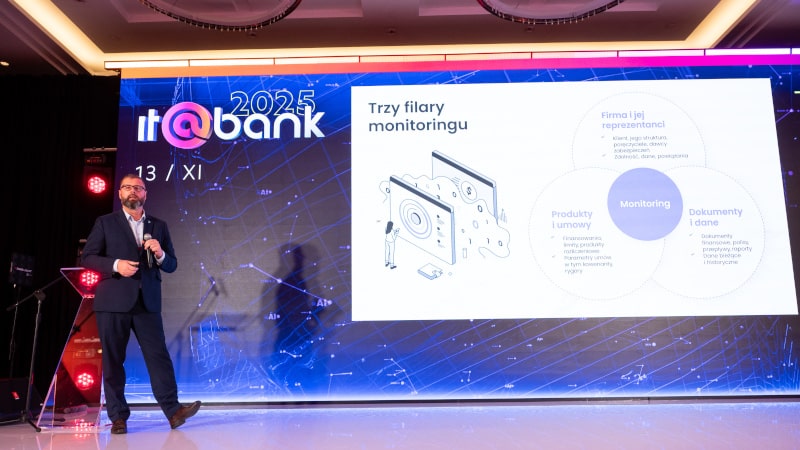How can banks support their clients’ growth by financing their investments while simultaneously protecting themselves from the risk of financial loss? In banking, credit risk management is a top priority. Two key tools that help achieve this are the rating system and the Early Warning System (EWS). Each of them is effective on its own, but it is their combination that creates a powerful duo capable of protecting a loan portfolio from significant losses.
In a bank’s operations, the rating system and the early warning system are closely interconnected but serve different roles within the customer risk assessment and monitoring cycle. One can imagine it as follows: the rating represents the client’s “health check” at a given point in time, while the EWS functions as a sensor that detects deterioration before it becomes critical.
Rating System – The Foundation of Risk Assessment
The rating system forms the basis for assessing a client’s creditworthiness. Its main task is to classify borrowers according to their probability of default, usually expressed on a scale from AAA (highest quality) to D (default).
Key components of the rating system:
- Financial data – analysis of financial statements, liquidity, profitability, and debt ratios. These form the foundation for assessing the current financial condition and development trends.
- Non-financial data – evaluation of management quality, market position, industry conditions, and macroeconomic factors affecting the client’s business.
- Credit history – analysis of past payment behavior to predict future performance.
- Statistical models – use of advanced algorithms to process data and generate the final rating score.
Early Warning System – Proactive Risk Management
The Early Warning System (EWS) acts as the bank’s “radar,” identifying potential issues before they turn into real losses. It monitors various warning signals in real time that may indicate a deterioration in the borrower’s financial situation.
Main functions of the EWS:
- Ongoing monitoring – tracking key indicators and parameters for each client in the credit portfolio.
- Automatic alerts – generating notifications when predefined risk thresholds are exceeded or when warning signs appear.
- Decision support – providing analyses and recommendations for credit portfolio management teams.
Synergy Between Systems – How They Work Together
The true strength lies in integrating both systems, creating a comprehensive credit risk management tool.
The rating system defines baseline parameters for the EWS. Clients with a higher rating (lower risk) have less restrictive warning thresholds, while for lower-rated clients, the system is more sensitive to warning signals.
For example, a 15-day payment delay from a client rated A might not trigger an alert, but for a client rated CCC, the same delay would immediately initiate corrective action.
The EWS also provides signals that can lead to rating updates. When it detects signs of deterioration in a client’s situation, it automatically triggers a rating review process. This ensures that risk assessments remain up-to-date and accurately reflect the borrower’s actual condition.
Practical Benefits of Integration
- Faster response to changes – Integrating both systems enables quicker detection and response to changes in borrowers’ situations. The bank can take preventive actions before client problems turn into losses.
- Better resource allocation – Integration allows for more efficient use of bank resources. Portfolio management teams can focus on high-risk clients, while routine monitoring is automated.
- Regulatory compliance – The cooperation of both systems supports compliance with credit risk management regulations, including Basel III and local banking requirements.
- Capital optimization – More precise risk assessment enables better planning of credit loss provisions and optimization of capital requirements.
Our Solutions
- VSoft Rating
A product tailored to the specific needs of the bank and its credit processes. VSoft Rating supports credit risk assessment, financial data analysis, decision-making, and process design for different customer types. A key advantage is the ability to configure models and rules without coding. - VSoft Early Warning System
This system enables large-scale monitoring and analysis of client data. When a risk of financial deterioration is detected, the system automatically generates corrective actions, assigns them to the appropriate employee, and monitors execution status.
It is built on the VSoft archITekt low-code platform, allowing for fast and flexible development aligned with the bank’s needs. - VSoft archITekt – The Foundation for System Development
A low-code platform that enables rapid addition of new functionalities and system development at the pace of business needs. VSoft archITekt allows visual creation of process and integration logic — without requiring large programming resources.
Summary
Integrating the rating system with the early warning system forms the foundation of modern credit risk management in banks. Working together, they enable proactive risk identification, rapid response to changes, and optimization of business processes.
The success of such integration depends on three key factors: high-quality data, appropriate technology, and organizational commitment to the risk management process.
Banks that effectively combine these systems will gain a significant competitive advantage through improved risk control, higher portfolio profitability, and greater financial stability.



